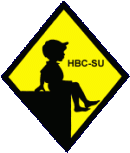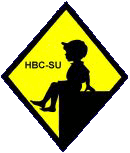
Schoolwear trends were still quite varied around the globe during the 1930s. Trends varied substabtially from country to country. American boys were less commonly wearing suits to school. Boys often wore corduroy knickers to school at the beginning of the decade and knee socks were replacing long stockings. Younger boys might wear short pants. Knickers were going out of style by the end of the decade. More and more boys were wearing long pants including some younger boys. Almost all older boys wore long pants. Weaters were popular during the winter.
Older boys wore long pants and younger boys short pants. Further north in Canada, knickers continued to be popular. Short pants were common throughout Europe. English boys continued wearing the same styles as they wore in the 1920s. Peaked caps, blazers, short trousers, and knee socks were widely worn. French children commonly wore smocks. German boys continued wearing short pants to schoo with both knee socks and long stockings. Suits were less common than in the 1920s. We still see boys wearing sailor suits to school at the beginning of the decade. A good example is an unidentified secondary school. We see far fewer sailor suits by the end of the decade. The NAZIs looked on them as too middle class for the unified Reich thst Hitler was building. Many Italian children also wore smocks.
Schoolwear trends were still quite varied around the globe during the 1930s. Trends varied substabtially from country to country. American boys were less commonly wearing suits to school. Boys often wore corduroy knickers to school at the beginning of the decade and knee socks were replacing long stockings. Younger boys might wear short pants. Knickers were going out of style by the end of the decade. More and more boys were wearing long pants including some younger boys. Almost all older boys wore long pants. Weaters were popular during the winter.
Older boys wore long pants and younger boys short pants. Further north in Canada, knickers continued to be popular. Short pants were common throughout Europe. English boys continued wearing the same styles as they wore in the 1920s. Peaked caps, blazers, short trousers, and knee socks were widely worn. French children commonly wore smocks. German boys continued wearing short pants to schoo with both knee socks and long stockings. Suits were less common than in the 1920s. We still see boys wearing sailor suits to school at the beginning of the decade. A good example is an unidentified secondary school. We see far fewer sailor suits by the end of the decade. The NAZIs looked on them as too middle class for the unified Reich thst Hitler was building. Many Italian children also wore smocks.
we note a wide range of school garments. Until after World War II this was mostly European and North America countries. A few exceoptions were Japan, the Philippines and British Dominions in Oceania. Thus was this was where the schools were. These were countries that had public schools in which large numberrs of children were being educated. Much of the rest of the world did not have pubkic schools because thery were colonies or too backward or poor to have publkic schools. Uniform grments were not very common, ecept at private schools in Brtaiun and ts emopire. It was here that many popular school garments originated such a school caps, ties, blazers short pants, knee socks, and sandals. Some of these garmenhts became iconic and infkluenced schoolwear in other countries. American boys generally did not wear uniforms, but two gaements becane icomic, the flat cap and corduroy knickers. Another Eyropean garment became an imprttant school garment--the smock. In a few countries smocks served as a kind of school uniform, especiallu France an Italy. Suits were becoming much less common. Sweathers were important in northern Europe and North America. Boys have worn all diffeent kinds of pants to school, knee breeches, long pants, knee pants, knickers, and short pants to school. This varired over time nd from country to country dependung on popualr fashion trends. After Workd War II with decolonizarion, we see a missive increase jn the numbers of children going to school. Interestngly as these new countruies became indeoendent and began developing pubklic scghiools, they instuituted school ynifirms, almost always Western styles. Even in the countries that did not institute =uniforms, Western styles were almost always adopted.
We have a good bit of informtion on schools during the 1930s. And as HBC-SU grows we are constantly adding more pertinent images and pages. We are working on country school chronology pages. We do not yet have many for the 1930s, but we do have an American 1930s page. Pages for several other countries are about ready to go. Most school images we can identify. But we have also found images that have proven confusing or that we just can not identify, much like the unidentified boy wearing a smock in the school above here (figure 1). Thus we have an unknown 1930s school page. Here we urge readers with insights to offer to add their views.
Related Chronolgy Pages in the Boys' Historical Web Site
[Return to the Main school uniform 20th century chronology page]
[Return to the Main school uniform chronology page]
[Late 19th century]
[The 1930s]
[The 1940s]
[The 1930s]
[The 1940s]
[The 1950s]
[The 1960s]
[The 1970s]
[The 1980s]
Related Style Pages in the Boys' Historical Web Site
[Long pants suits]
[Knicker suits]
[Short pants suits]
[Socks]
[Eton suits]
[Jacket and trousers]
[Blazer]
[School sandals]
Navigate the Boys' Historical Clothing Web Page
[Return to the Main School uniform page]
[Introduction]
[Activities]
[Biographies]
[Chronology]
[Clothing styles]
[Countries]
[Bibliographies]
[Contributions]
[FAQs]
[Glossaries]
[Images]
[Links]
[Registration]
[Tools]
[Boys' Clothing Home]
